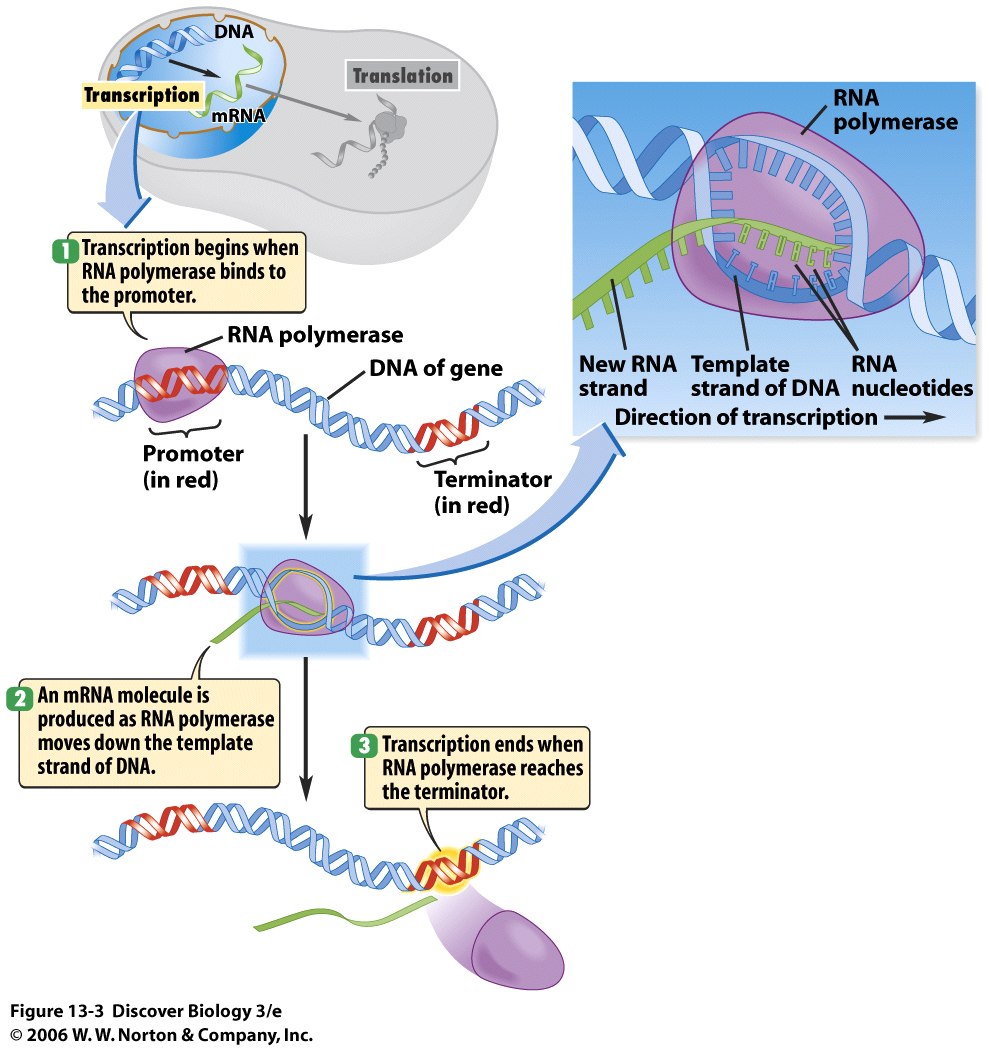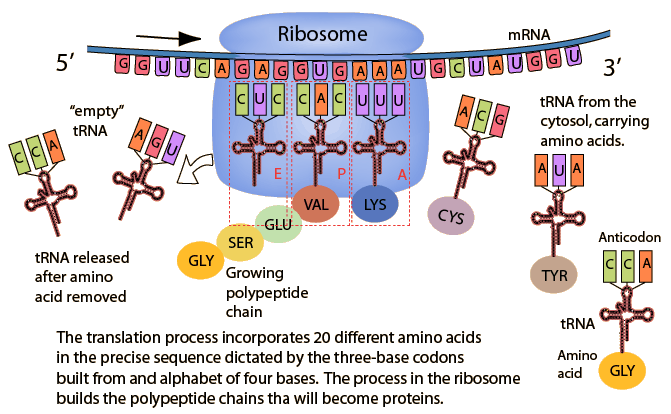Transcription: Produce a copy of RNA from a DNA strand
1. Overall DNA strand: upstream (promotor region) where TATA box is found in DNA
2. transcription unit is the bubble where the RNA is created
3. downstream (terminator) where AAAUAAA box is found in RNA
4. In transcription unit, DNA strand unwinds: one strand is antisense/template strand and is transcribed, other is sense/coding strand and is not transcribed
5. RNA nucleotides being to grow in 5 to 3 direction, complementary base pairs from template/antisense strand (A-U) (T-A) (G-C) (C-G)
6. RNA is fragile because: Single stranded, double hydroxyl groups therefore more reactive
7. Gap-Cap (G) at very beginning and Poly-A-tail (AAAA) at very end of RNA stabilizes it
8. If errors occur, only errors in protein which are not as significant as an error in DNA, which would change genetic makeup. Therefore, RNA transcription is faster
9. Specific nucleotide in DNA template/antisense strand signals transcription to stop.
10. RNA detaches from DNA strand, mRNA strand releases and DNA reforms

Translation: synthesis of
protein from mRNA template
1.
Initiation factor proteins assemble mRNA
and initiator tRNA
2.
Ribosomes, large and small subunits, attach
to mRNA strand
3.
Within the ribosomes are sites where the
tRNA can bind to
4.
tRNA bind to peptide (A)-tRNA with amino acid which is added to polypeptide chain as it enters the P site (P)-growing polypeptide amino chain. The tRNA, without its amino acid exits via (E)-unchanged tRNA without amino acid and gets ejected.
5.
First amino acid (AUG) starts in P site
whereas all others begin at A site
6.
As the tRNA enters the P site, the amino
acids attach to the previous amino acid in the A site and create a long polypeptide chain
7.
The ribsomes, tRNA process and Polypeptide
chain continues to grow 5 to 3, until it reaches a stop codon (UGA, UAA, UAG)
8.
At the stop codon, the polypeptide and
translation machinery detach and release factors cut the the polypeptide from
the last tRNA
9.
Polypeptide chain is released into the ER
10.
The polypeptide chains are assembled or
packaged together in the ER

